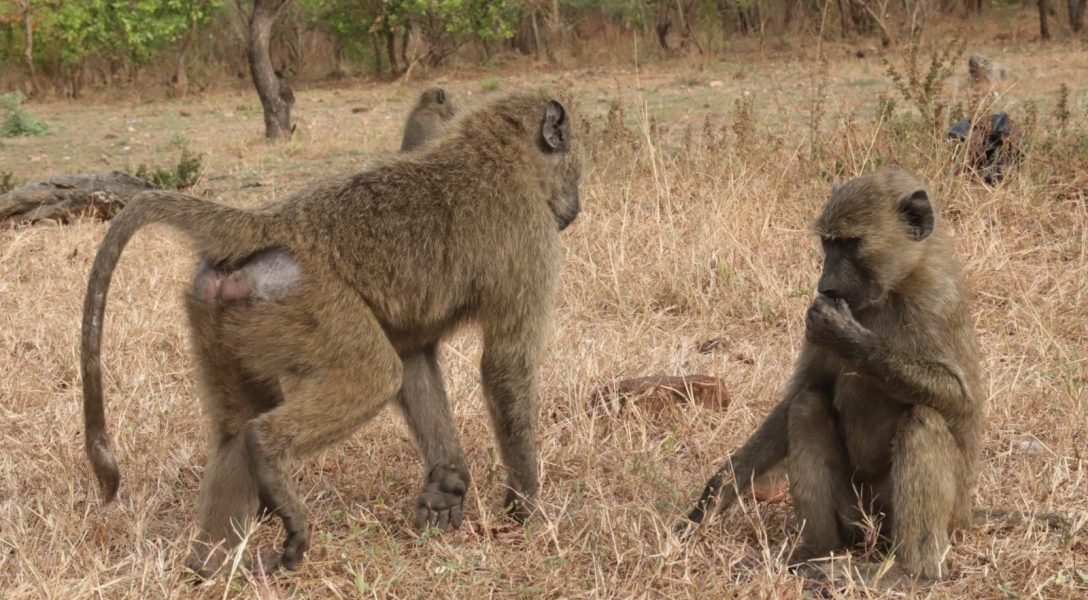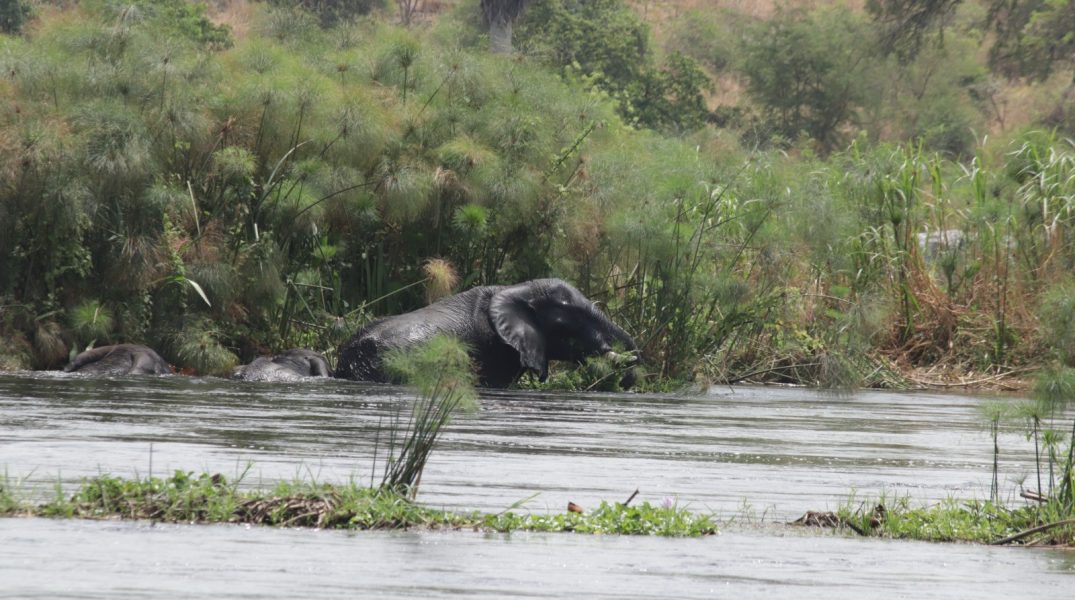
Nimule is a sanctuary—home to elephants, antelopes, hippopotamus, various bird species, warthogs, fish (with rhinos and giraffes now extinct). But poaching, disease, and human encroachment are relentless.
The beautiful yet complicated scenery of the park—bordered by Uganda and divided by the Nile, with Gordon Hill rising on one side and a highway slicing through—offers both access and vulnerability for the animals who now face daily threats.
We assembled at 7 a.m. for the morning parade at Nimule National Park Station, bracing ourselves for an adventure, one as much about exploration as about witnessing the park’s urgent conservation battles. After a briefing, we boarded a park vehicle and began the bumpy ride toward the riverbank.
This is a site for brickmakers, whose activities leave behind treacherous potholes—hazards for both humans and wildlife.
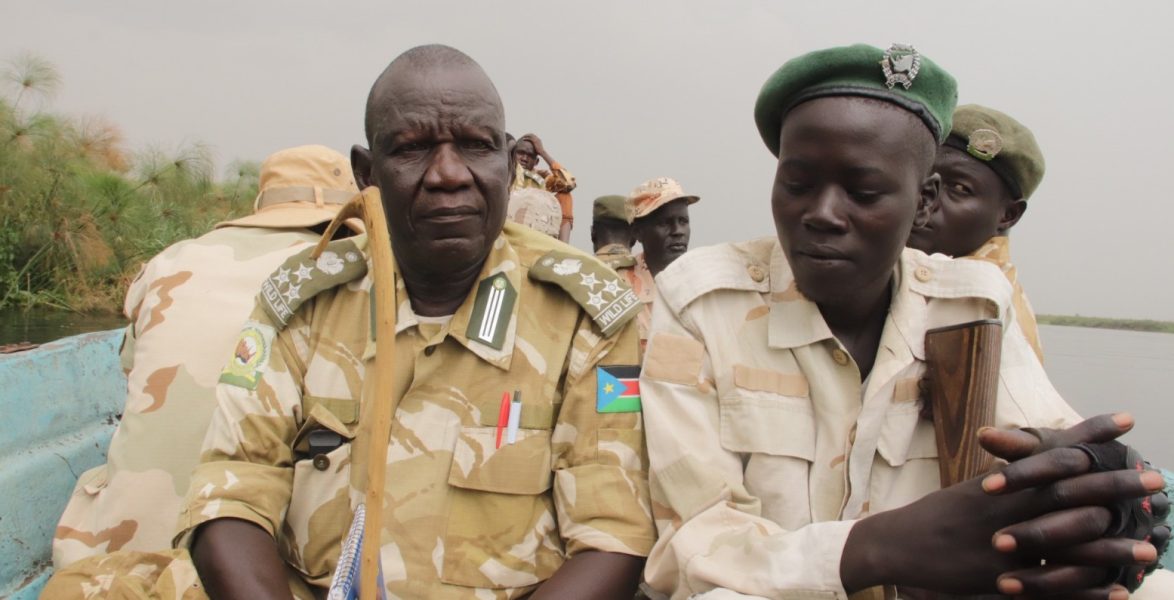
“One hippo got stuck in one of these,” a ranger noted, pointing to a deep, muddy hole. He had asked the brickmakers to return and fix the damage, but they never did.
At the river, two speedboats awaited. One had a minor leak, hastily patched. As we stepped in, the wheezing grunts of hippos echoed across the water. A young, confident ranger assured us we were safe, though she and her team were heavily armed.
“This park isn’t just home to animals,” she said. “It’s also targeted by poachers. They know our patrol schedules. They strike when we’re not here.”
But not today. The rangers were “armed to the teeth,” ready for both patrol and protection.
Minutes into our journey on the Nile, we encountered a joyful bloat of hippos frolicking near the papyrus reeds. Several more lined the banks—massive, noisy giants, seemingly unbothered by our presence. Our boatmen skillfully navigated the rocky waters.
We were looking for elephants near Jelie after sightings the previous day. The elephants of Nimule are migratory, often crossing into Uganda. Their movements had become more erratic since one of their own was killed. We searched for hours but found none.
The team split into three groups. One remained on the Ugandan bank, another—with the cameraman—explored further downstream. I joined the Wildlife Crime Unit and the Director General of the Wildlife Authority. As we moved ahead, another bloat of hippos surfaced—serene and imposing.
Then came news over the phone: one team had spotted elephants crossing into Uganda—three adults and a calf. Not the full herd, but it confirmed movement. Director General Oler Brown nodded: “At least we confirmed the movement. That’s a win.”
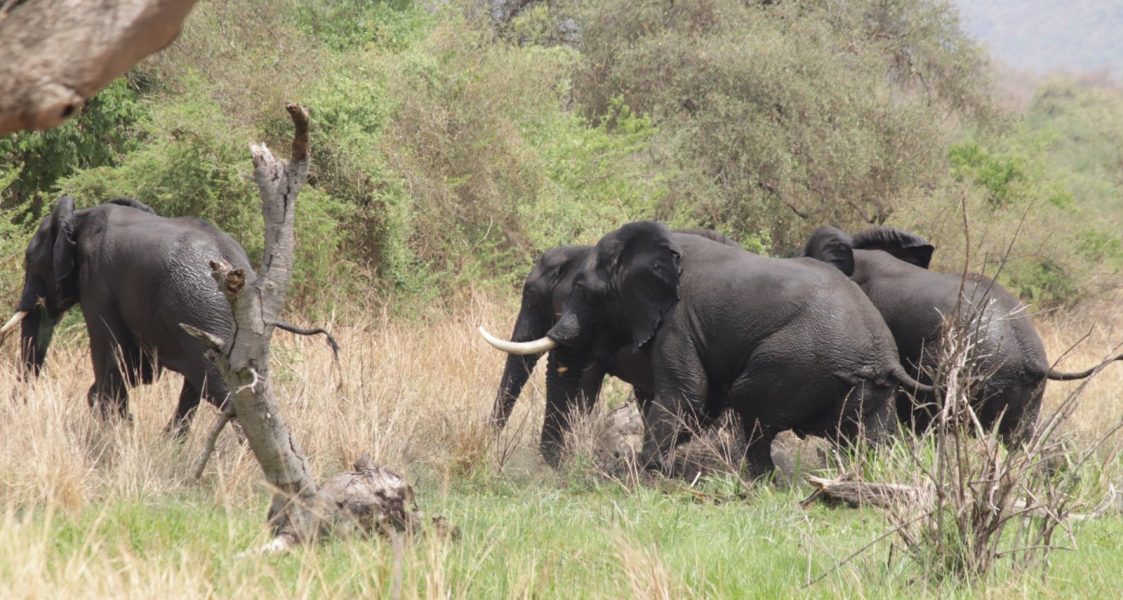
As we began to return, tension flared—one ranger was missing. His last known location had shifted. We scanned the banks and eventually found him, safe but disoriented. With all accounted for, we pushed toward Elebubu Post.
The terrain made docking difficult. We disembarked early and continued on foot. As we approached, two young men in a small boat sped away. They claimed to be from Nimule, but our boatmen didn’t recognize them. Suspicion rose: were they smuggling wildlife products?
The hike to Elebubu was grueling. My rigid shoes bruised my feet. Along the way, we startled antelopes, some drinking from the river before vanishing. The scenery was breathtaking, especially the view of the Gordwan Hills—beauty entwined with danger.
Near the border, marked by palm trees, we found a grim sight: the carcass of a young elephant, no more than a year old.
“It died of a heart condition,” said Director General Oler Brown. “We’re still waiting for veterinary support from Juba.”
It wasn’t just elephants. Warthogs limped through the bush, likely victims of foot-and-mouth disease. The park was under siege—from poachers and disease.
At Elebubu, we found signs of elephants—uprooted trees and fresh tracks—crossing into Uganda. I finally removed my shoes, feet raw. Fifteen rangers stood in line to receive us, led by a commanding officer. They hadn’t been paid in over a year. Supplies were scarce; morale thinner still.
But they endured. They’d set intricate metal traps to detect snares, monitored gunshots, tracked disease. They saluted the Director General, who reminded them of the mission: protection, monitoring, and vigilance.
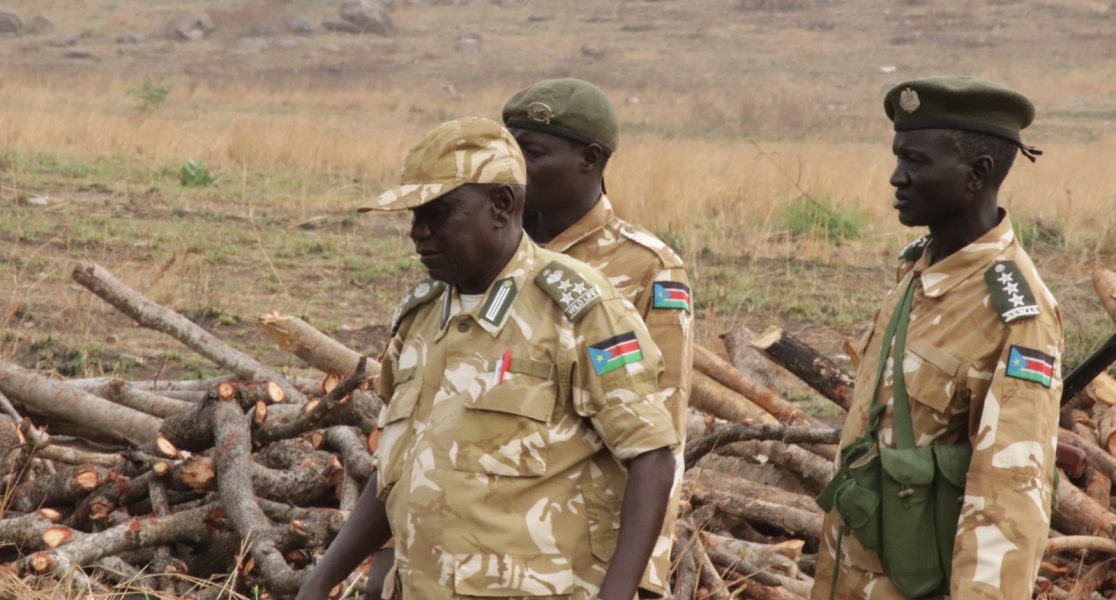
These men are the park’s final line of defense.
One post had already been abandoned due to lack of manpower. Others barely held on. Appeals for salaries, equipment, and reinforcements went unheeded.
As we prepared to leave, a new alert: a woman had been caught at the border attempting to cross into Uganda with a saucepan full of fresh and dried antelope meat. We rushed back.
The Nile turned hostile. Just past a bend, we spotted two elephants grazing peacefully. Civilians on the Ugandan side gathered to watch. We slowed, taking photos. One elephant lifted its trunk—a wild, intimate gesture.
Twelve minutes later, disaster: our boats became trapped in thick water hyacinths. We couldn’t move. Panic rose. The Nile has claimed lives this way. We were far from shore.
Boatmen hacked through the weeds with paddles and blades. Even I whispered prayers. After ten tense minutes, we broke free—sweat-soaked and shaken.
At the Wildlife Crime Unit post, the woman was being interrogated. She had hidden 27 pieces of dried and 4 pieces of fresh antelope meat. She confessed: she bought it from soldiers in the bush.
“I used to sell fish,” she said. “But bushmeat sells better.”
It was illegal. But it was survival.
“It’s not just antelope,” an officer said. “Warthogs, pangolins, crocodiles—even monkeys are hunted.”
The woman said she turned to bushmeat to support her family and pay school fees.
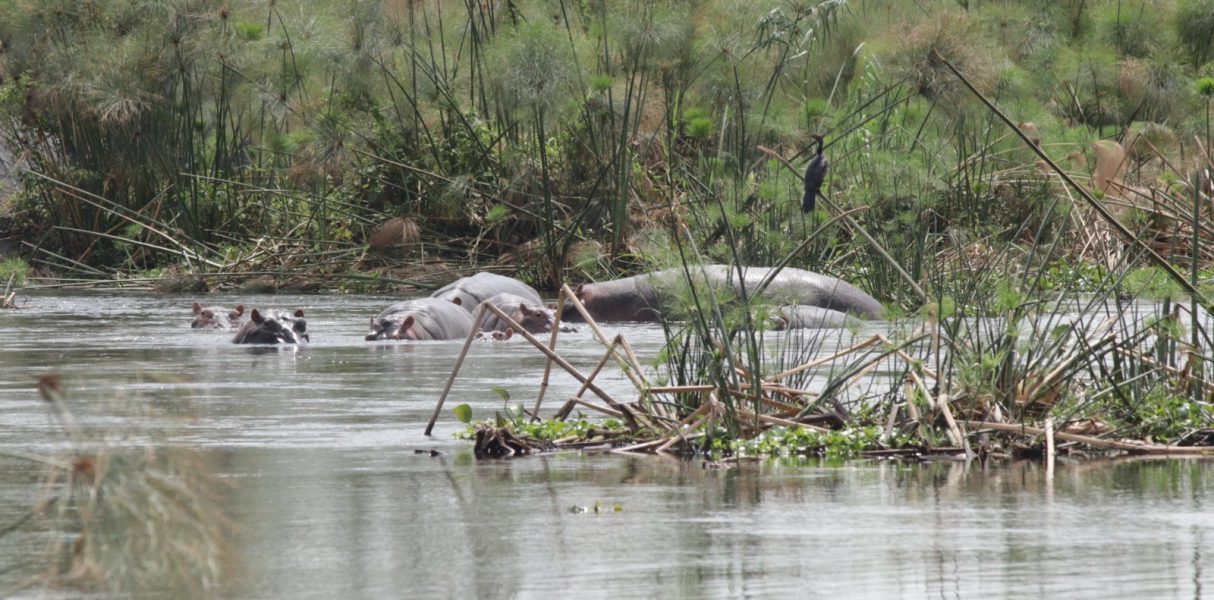
Colonel Ambayo Justice Francis, in charge of wildlife awareness, was blunt: “Lack of economic alternatives is the root of poaching. The communities know the laws, but they have no options.”
He stressed the need for alternatives: vocational training, micro-loans, sustainable businesses. Anything to give communities another path.
Uganda and South Sudan have developed a cross-border wildlife protection policy. Offenses in one country are reported in the other. They share transport and enforcement data. Road signs warn of animal crossings. Some animals are GPS-tagged. If one stops moving, teams respond.
But not all animals are tagged. Many live and die unseen—ghosts in the underbrush of Nimule, where beauty and loss walk side by side.
The Horror
Deep in the Gordon Hills, paths crossed. An elephant carcass lay near the Nile, tusks missing. Tracks showed intruders came from the hills and left through the river. Rangers said the elephant was shot at night. The body was found on the second day of routine monitoring.
James Mading, head of the Wildlife Crime Unit in Nimule, blamed armed groups—sometimes foreign poachers or rogue soldiers.
“Poaching happens every 2–3 days. It never stops,” he said.
Protection of wildlife has become a second priority. Two ranger posts have been abandoned due to lack of funding. Others are manned by only a few.
The government fears elephants may vanish, like rhinos before them.
“Some animals were killed for meat. Now it’s commercial,” said Director General Khamis Adigo.
Even monkeys are hunted—some for food, others for rituals. But thanks to recent community outreach, locals now protect monkeys. Today, they roam freely along roads—a small but meaningful victory, said Colonel Ambayo.
The Beauty
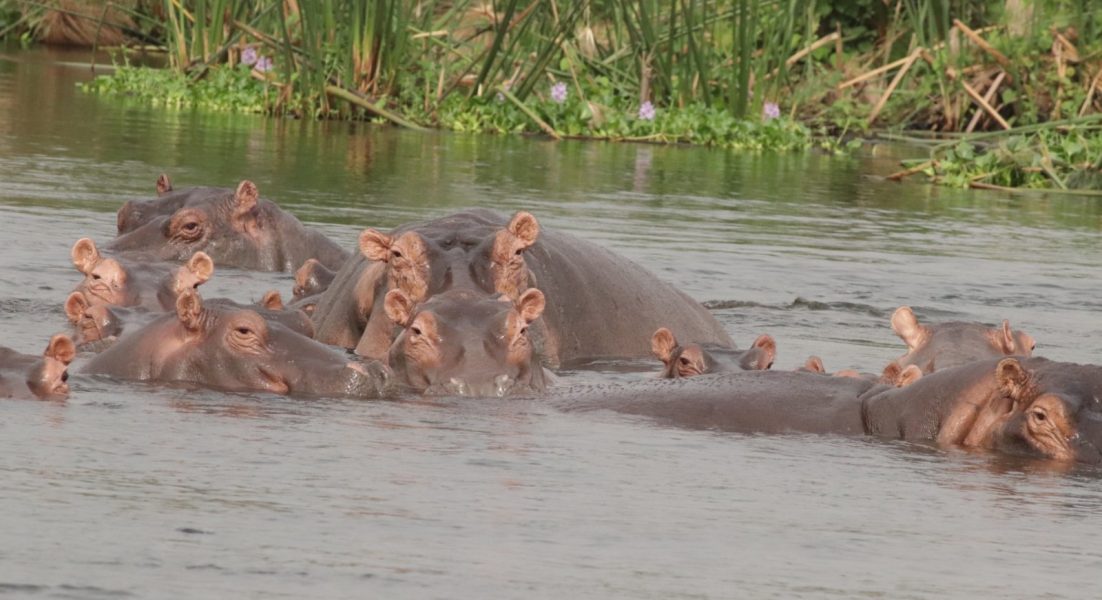
On the third day of our journey, we rode motorcycles to Fulla Falls—Nimule’s wonder. The roar of the water thundered from a distance, exhilarating and vast.
The sparse land revealed the Nile clearly. Something had changed. In the early 2000s, the park was dense with trees. Now, many are gone—cut for charcoal, boats, or firewood.
Suddenly, a sharp sting on my thigh—I slapped at a massive fly. Elephant flies swarmed us during the ride. The motorcyclist said they’ve been here for some time, scaring off visitors.
Ahead stood mighty Fulla Falls, once eyed by the government for a hydroelectric dam. Alongside the falls, fishermen smoked Nile perch in grass-thatched huts covered with iron sheets. The fish turned brown from limited wood and was transported to Nimule Market where demand is high.
Nimule National Park is a beautiful, profound experience. Its lush habitats, remarkable wildlife, and iconic Nile features like Fulla Falls are treasures worth protecting. With investment and care, the park could transform South Sudan’s economy through tourism and education.
Established in 1954, Nimule National Park spans 410 km² along the Nile and the Uganda border, embracing the Gordon Hills and generations of untamed life.
